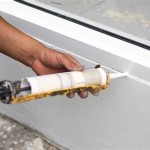How To Fix Scratches on Hard Plastic Car Interior Trim
Hard plastic trim is a ubiquitous feature in most car interiors. It’s chosen for its durability, affordability, and ease of manufacturing. However, even the most durable plastics are susceptible to scratches, scuffs, and general wear and tear over time. These imperfections can detract from the overall appearance and perceived value of the vehicle. Fortunately, minor scratches on hard plastic car interior trim can often be addressed with some basic tools and techniques. The success of any repair will depend on the severity of the scratch and the type of plastic involved.
Before initiating any repair, it's crucial to understand the nature of the damage. Scratches can range from superficial surface marks to deeper gouges that penetrate the plastic. Identifying the depth and width of the scratch will dictate the appropriate repair method. Simple surface-level scratches might only require polishing, while deeper scratches may need filling and texturing to achieve a seamless finish. Furthermore, understanding the type of plastic is beneficial, although often difficult without specific manufacturer information. Different plastics respond differently to cleaning agents, polishing compounds, and heat, so testing in an inconspicuous area is always recommended beforehand.
This article will detail several methods for addressing common scratches on hard plastic car interior trim, ranging from simple cleaning and polishing to more involved filling and texturing techniques. The goal is to provide a comprehensive guide that empowers individuals to restore their car's interior to a more pristine condition.
Cleaning and Preparation
Before attempting any scratch repair, thorough cleaning of the affected area is paramount. This removes dirt, grime, and any loose debris that could interfere with the repair process or potentially exacerbate the damage. Use a dedicated automotive interior cleaner or a mild all-purpose cleaner diluted with water. Apply the cleaner to a microfiber cloth and gently wipe the area, paying particular attention to the scratched region. Avoid using abrasive cleaners or scouring pads, as these can further damage the plastic. After cleaning, dry the area thoroughly with a clean, dry microfiber cloth. Inspect the scratch closely under good lighting to assess its depth and extent. Proper preparation ensures that the repair materials bond effectively and the finished result is aesthetically pleasing.
Once the area is cleaned, masking off the surrounding surfaces is a critical step to protect them from accidental damage during the repair process. Use painter's tape to carefully outline the area to be treated, ensuring that the tape is firmly adhered to the surface. This is especially important when using polishing compounds or heat guns, as these can damage adjacent trim pieces or upholstery if not properly shielded. Masking also helps to create a clean and defined work area, ensuring a more precise and professional finish.
Furthermore, consider wearing appropriate personal protective equipment (PPE), such as gloves and safety glasses, to protect skin and eyes from potential irritants or chemicals present in the cleaning and repair products. This is particularly important when working with solvents or adhesives. Adequate ventilation is also crucial, so ensure the work area is well-ventilated, especially when using products with strong odors.
Light Scratch Removal with Polishing Compounds
For superficial scratches that haven't deeply penetrated the plastic, polishing compounds are often an effective solution. These compounds contain fine abrasives that gently buff away the surrounding plastic, effectively leveling the surface and minimizing the appearance of the scratch. Choose a polishing compound specifically designed for plastics. Automotive polishing compounds intended for paint are generally too abrasive and can damage plastic trim. Apply a small amount of the polishing compound to a clean microfiber cloth. Using gentle, circular motions, rub the compound onto the scratched area. Apply moderate pressure, but avoid pressing too hard, as this can generate excessive heat and potentially damage the plastic. Continue polishing for several minutes, periodically checking the progress of the scratch removal. After polishing, remove any residual compound with a clean, damp microfiber cloth and dry the area thoroughly.
If the initial polishing doesn't completely remove the scratch, repeat the process, applying slightly more pressure or using a slightly more abrasive polishing compound. However, exercise caution and avoid using excessively abrasive compounds, as these can create swirl marks or dull the finish of the plastic. If the scratches persist after multiple polishing attempts, it may indicate that the scratches are too deep to be removed by polishing alone and require a more aggressive repair method.
For larger areas or multiple scratches, a rotary polishing tool with a soft foam pad can be used to expedite the polishing process. However, it's crucial to use a low speed setting and apply light pressure to avoid overheating the plastic. Always test the polishing compound and technique on an inconspicuous area of the trim before applying it to the main scratch.
Repairing Deeper Scratches with Fillers and Texture Matching
Deeper scratches that polishing cannot address require the use of fillers. These fillers are designed to fill the void created by the scratch, creating a smooth and even surface. Choose a plastic filler that is specifically formulated for automotive interior trim. Epoxy-based fillers are often a good choice due to their strength and durability. Clean the scratched area thoroughly and roughen the surface slightly with fine-grit sandpaper (e.g., 400-grit) to promote adhesion of the filler. Apply a small amount of filler to the scratch, using a putty knife or applicator to press it firmly into the void. Ensure that the filler is slightly overfilled to compensate for shrinkage during curing. Allow the filler to cure completely according to the manufacturer's instructions. Once the filler is cured, sand it smooth with progressively finer grits of sandpaper (e.g., 400-grit, 600-grit, 800-grit) until it is flush with the surrounding plastic. Take care not to sand the surrounding plastic excessively, as this can create an uneven surface.
After sanding, the filled area will likely have a smooth, untextured surface that contrasts with the surrounding textured plastic. To restore the original texture, texture matching techniques must be employed. Several methods can be used, depending on the type of texture and the desired level of realism. One common method involves using a texture pad or sponge soaked in a suitable solvent or paint thinner. Press the texture pad firmly onto the filled area to transfer the texture pattern. Alternatively, a texture gun can be used to spray a fine mist of textured paint onto the filled area. Experiment with different techniques and materials on a test piece of plastic to achieve the desired texture.
After texturing, the filled area will likely need to be painted to match the color of the surrounding plastic. Use an automotive interior paint that is specifically designed for plastics. Clean the area thoroughly with a degreaser and apply several thin coats of paint, allowing each coat to dry completely before applying the next. Avoid applying thick coats of paint, as this can create runs or drips. After painting, apply a clear coat to protect the paint and enhance its durability. Allow the clear coat to dry completely before handling the repaired area. The repaired area should now blend seamlessly with the surrounding plastic, effectively concealing the scratch.
Alternative texturing approaches include utilizing specialized texture powders and heat guns. These powders are applied to the filled area and then heated with a heat gun until they melt and create a textured surface. This method requires practice and careful control of the heat to achieve a consistent and natural-looking texture.

2008 Nissan Altima A T Shifter Indicator Bezel Trim Sp 12283

2008 Nissan Altima A T Shifter Indicator Bezel Trim Sp 12283

2008 Nissan Altima A T Shifter Indicator Bezel Trim Sp 12283

2008 Nissan Altima A T Shifter Indicator Bezel Trim Sp 12283

Audi A3 8p1 Front Left Wheel Arch Spoiler Trim 8p0853887b New Genuine
Roadmap For Focused Ion Beam Technologies

Trim Panel Remover Mechanical Work Sydney Tools
Award Book

Myalloys
Award Book
Related Posts








